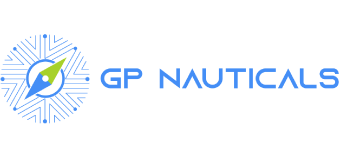Increased Transit Capacity in the Panama Canal
The Panama Canal, one of the most crucial and strategic infrastructures for global trade, has faced numerous challenges throughout its history. Among these, managing water levels in Gatun Lake has been one of the most significant. The recent news that water levels in Gatun Lake are higher than expected is a positive development, allowing the Panama Canal Authority (ACP) to increase the draft and transit capacity of large vessels.
Increase in Canal Draft
Draft, which is the maximum allowable depth for ships passing through the canal, will increase in two phases. The first increase will be to 47 feet (14.33 meters) on June 26, followed by an additional increase to 48 feet (14.63 meters) on July 11. These increments are made possible by recent rains that have significantly improved water levels in the canal.
Increase in Transit Capacity in the Panama Canal
In addition to the draft increase, the ACP has announced an increase in the number of large ships (Neopanamax) that can transit the canal each day. Starting from August 5, the daily capacity will increase from 34 to 35 ships. This adjustment directly reflects improvements in water levels and the ACP’s commitment to optimizing canal operations.
The Panama Canal and its Recent Challenges
Since its opening in 1914, the Panama Canal has been fundamental to global trade, facilitating the passage of over 14,000 ships annually and significantly shortening navigation routes between the Atlantic and Pacific oceans. However, it has faced significant challenges related to water resource management.
The meteorological phenomenon El Niño, which causes drought conditions, has been a major obstacle. In 2023, low water levels caused serious operational issues, reducing draft and limiting transit capacity. Unlike climate change, El Niño is a cyclical weather phenomenon that affects global weather conditions and has a direct impact on precipitation levels in the canal region.
Importance of Water Resource Management
Effective management of water resources is crucial for the continuous operation of the Panama Canal. Recent rains have provided significant relief, improving water levels and allowing greater operational flexibility for the canal. However, the Panama Canal Authority (ACP) continues to work on long-term strategies to mitigate the effects of future El Niño events and other climatic challenges.
Economic Impact and Benefits of the Panama Canal
The Panama Canal is not only vital for global trade but also a major source of revenue for the country. Improvements in transit capacity and increased draft benefit shipping companies by reducing wait times and increasing efficiency. Moreover, they strengthen the Panamanian economy by boosting toll revenues.
Future of the Panama Canal
While recent improvements are a positive step, the canal has not yet fully recovered its total capacity. The normal draft of 50 feet remains the goal, and the ACP is committed to achieving this as conditions permit. Proactive planning and management will continue to be essential to address future challenges and ensure the Panama Canal’s role as a pillar of international maritime trade.
The recent news of higher water levels in Gatun Lake and the resulting increase in draft and transit capacity are encouraging developments for the Panama Canal. These changes not only reflect an improvement in current operational conditions but also underscore the importance of effective water resource management and the ability to adapt to climatic phenomena such as El Niño. As the canal continues to evolve and face new challenges, its success will depend on the ACP’s ability to listen, adapt, and continuously optimize operations for the benefit of global trade and the Panamanian economy.
For more news about logistics and maritime sector, visit our website.
